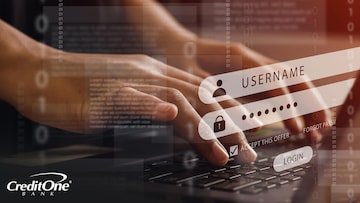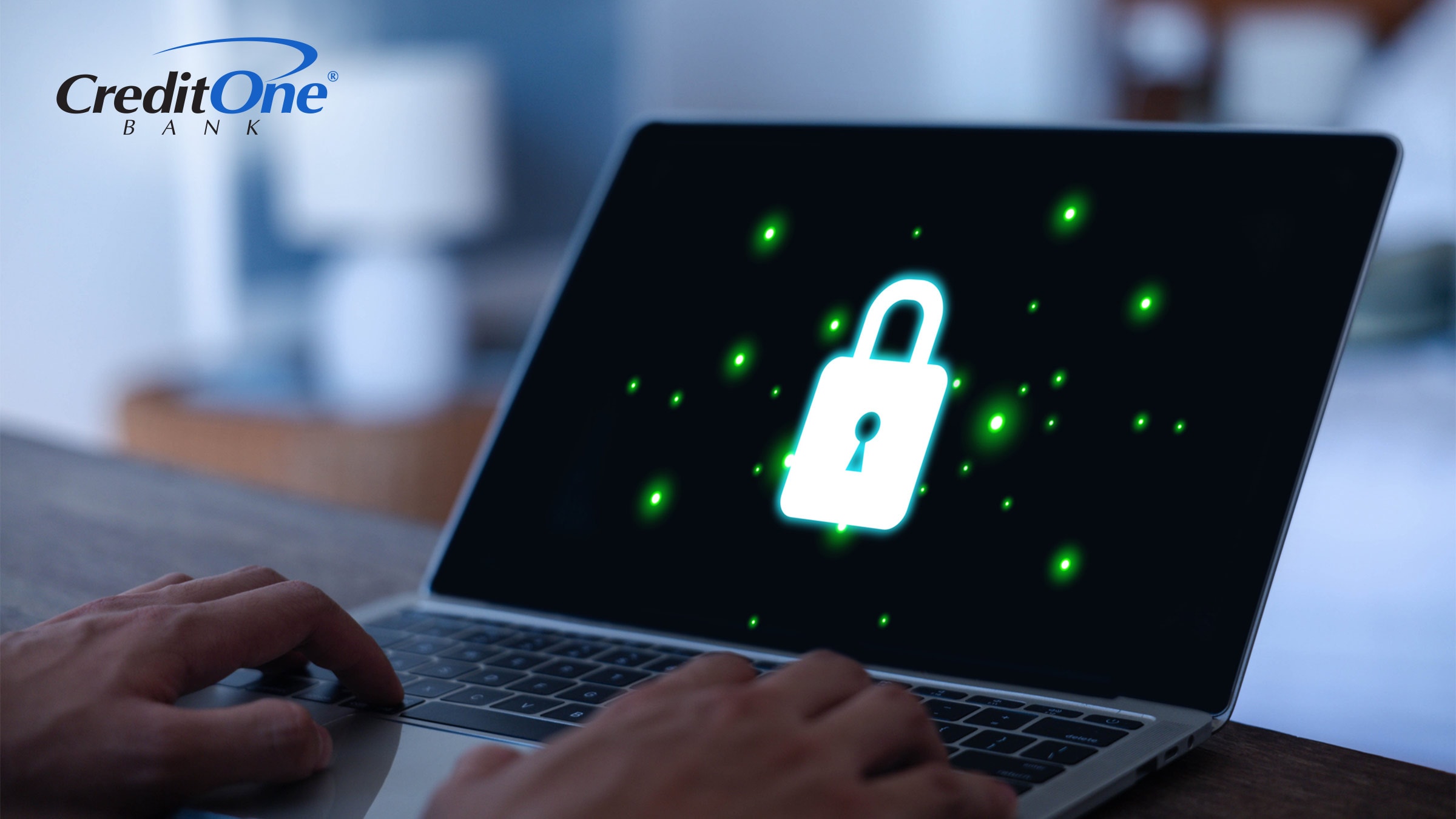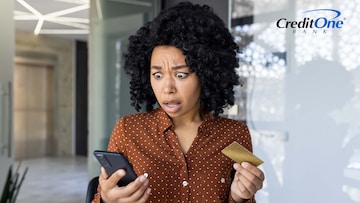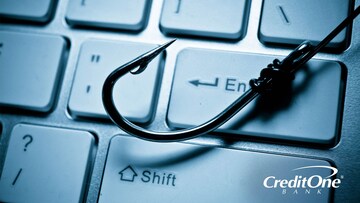
How To Protect Bank Accounts From Hackers
October 02, 2025
We all want to keep our hard-earned money safe from cybercriminals. Learn how to protect your accounts and prevent long-term financial damage.

In this article:
- Introduction
- Use Strong Passwords and Two-Factor Identification
- Be Careful When Using Public Wi-Fi
- Regularly Update Software on Your Devices
- Use Ad Blockers and Antivirus Software
- Evaluate Your Bank’s Security Features
- Protect Yourself From Identity Theft
- Learn To Recognize Scams and Scammers
- What Can Someone Do With Your Bank Account Number?
- What To Do if Your Bank Account Is Hacked
Introduction
Keeping your bank account safe from hackers is an essential part of the plan when it comes to protecting your finances and identity.
If hackers gain access, they can steal your money, make unauthorized purchases, or even open fraudulent accounts in your name. This can cause serious damage to your credit, which may be time-consuming and stressful to repair.
Plus, you could also face delayed bill payments, bounced checks, and be unable to access the money you need day-to-day.
Taking proactive steps to secure your account, like using strong passwords and enabling two-factor authentication (2FA), reduces the risk of fraud and helps you maintain control over your financial life.
Use Strong Passwords and Two-Factor Identification
Your bank account’s password is the first line of defense against online threats. It significantly reduces the chances of your account being compromised through brute-force attacks, phishing scams, or data breaches. Creating a strong password is one of the simplest ways to protect an account from cybercriminals.
Every site has its own list of password requirements, but a strong bank account password should contain at least 12 characters, preferably closer to 20. When creating your password, it’s best to use a mix of uppercase and lowercase letters, numbers, and special symbols (such as @, #, or %). And you can better protect yourself by not using any personal information that infiltrators can easily find or guess, like your name or birthdate.
Instead of personal information, create a passphrase using unrelated words (like ChairFallingSpread) or substitute letters with symbols (like “Tr33$Fly#Ocean9!”). And make sure each of your online accounts has a unique password that isn’t used for another account. This will limit the potential harm if one password is compromised.
To help with all this, you can use a trusted password manager app. The ones built into Android and iOS smartphones or major web browsers can securely store your passwords or even generate them.
Multi-factor authentication (or MFA) adds another layer of protection for your bank account, since it requires one or more additional forms of verification along with your password.
These could include a code sent through text message, a code generated by an app on your phone, a physical security key plugged into your computer or a biometric reading.
You’ve likely used this at some point as two-factor authentication (or 2FA), which is probably the most common form of MFA.
With MFA enabled, a stolen password alone isn’t enough to sign in, since you also need another factor. This extra security makes it much harder for a hacker to access your account, so you can have a little more peace of mind.
Be Careful When Using Public Wi-Fi
It’s important to be cautious when using public Wi-Fi because these networks are often unsecured, which means users are more vulnerable to data interception.
When you connect to public Wi-Fi — like at an airport, café, or hotel — any information you send or receive, including bank details, can potentially be monitored or stolen by cybercriminals using tactics like “man-in-the-middle” attacks.
Some hackers even set up fake Wi-Fi networks that seem legit, but are actually traps designed to capture your data. Using public Wi-Fi without protection can make you a target for identity theft and financial fraud.
To stay safe on public Wi-Fi networks, avoid logging in to sensitive accounts, use a Virtual Private Network (VPN) to encrypt your data, and turn off automatic Wi-Fi connections on your devices. These precautions help ensure your private information stays protected, even when you’re using shared networks.
Regularly Update Software on Your Devices
When software developers discover vulnerabilities in their programs, they release updates or “patches” to fix them.
Keeping your operating system, apps, antivirus software, and other tools up to date lets you benefit from the latest security improvements, which make it harder for attackers to gain unauthorized access.
On the other hand, delaying or ignoring these updates can leave your system outdated and your sensitive data unprotected. Many security breaches occur when hackers take advantage of unpatched systems, which are much easier to infiltrate.
By regularly updating, you close these gaps and strengthen your device’s overall protection, reducing the risk of your system or personal data being compromised.
Use Ad Blockers and Antivirus Software
Ad blockers and antivirus software can play important roles in protecting your bank account from hackers, by reducing your exposure to malicious threats online.
Ad blockers can prevent you from seeing or interacting with dangerous advertisements, such as malvertising. These are ads that appear legitimate but secretly deliver malware or redirect you to phishing sites designed to steal your banking credentials.
Anti-virus software provides a layer of defense by detecting and removing malicious programs that can infect your device, such as keyloggers, spyware, or trojans that monitor your activity or steal sensitive information like usernames and passwords. Many modern anti-virus tools also offer real-time scanning and web protection, alerting you if you visit suspicious websites or download unsafe files.
Evaluate Your Bank’s Security Features
When looking into your bank’s security, check for features that help protect your account, personal information, and transactions.
Account alerts: Find out if you can be alerted of suspicious activity by text or email. These activities may include failed login attempts, large withdrawals, or account changes.
Fraud detection and monitoring: Ask how the bank monitors accounts for unusual behavior and what systems are in place to detect and prevent fraud.
Encryption standards: Confirm that the bank uses end-to-end encryption to protect data during online and mobile transactions.
Mobile app security: Inquire about the security features of their banking app, such as biometric login (fingerprint/face ID), remote log-out, or app-specific personal identification numbers (PINs).
Two-factor authentication: See if the bank supports 2FA, adding an extra layer of security in tandem with your password.
Choosing a bank with robust security features in place can greatly reduce your vulnerability to scammers and hackers while providing you with valuable peace of mind when managing your finances.
Protect Yourself From Identity Theft
When someone steals your identity, they could potentially open credit cards, take out loans in your name and even get into your bank account.
These immediate headaches are in addition to long-term effects like hurting your credit score and creating ongoing legal and financial complications.
Luckily, you can better protect your identity with a combination of habits and technology. Taking a few precautions can help reduce the risk of identity theft and its life-disrupting consequences.
Protect your information: Shred documents with sensitive data before discarding them (like bank statements, medical bills). Never carry your Social Security card or write down passwords where others can find them. Always verify who you’re talking with before sharing information over the phone, email, or online.
Monitor financial and credit activity: Review your bank and credit card statements thoroughly to look for suspicious charges. Request your free credit reports at AnnualCreditReport.com and review them for unfamiliar accounts or activity.
Set up bank alerts: Enable transaction and login alerts from your bank and credit card companies to be notified of unusual activity immediately.
Freeze your credit: A credit freeze prevents new credit accounts from being opened in your name — by you or anyone. When you want to apply for a new account, you can temporarily unfreeze your credit. It’s free to set this up through Equifax, Experian, and TransUnion.
These steps can help you protect your identity from hackers and scammers, respond to unusual activity, and make it harder for them to get to your bank account, too.
Learn To Recognize Scams and Scammers
Modern hackers use a variety of techniques, and credit card scams come in many forms, so being able to recognize them is key to protecting your personal and financial information. Criminals tend to use the same common methods to get access to bank accounts.
Phishing: Fraudsters will email, text, or call you pretending to be your bank and ask you to confirm account details, passwords, or PINs. Phishing messages will often include links to counterfeit websites that look like the real thing.
Overpayment: This scam typically involves someone sending you too much money for an item you sold them. The scammer may say it was an accident or give another reason, but they’ll pressure you to refund the difference. Eventually, the bank will catch that their payment to you was fraudulent and reverse it. But you’ll have lost the refunded money, along with the item you sold.
Smishing: Named for SMS and phishing, smishing sees a scammer sending a text message that appears to come from a trusted source like your bank. This text will likely claim that there’s an urgent issue. If you respond, the scammers will ask for sensitive information like account numbers, passwords, or Social Security numbers. Some may also try to trick you into installing malware on your phone.
Catphishing: Catphishing scams combine catfishing (also known as romance scams) with phishing. Scammers build fake online relationships to emotionally manipulate victims and eventually ask for money under false pretenses.
- Impersonation: Scammers pose as law enforcement agents and send victims messages or calls threatening them or their loved ones with serious consequences — such as legal action, fines or arrest — unless the victim provides personal information right away.
Recognizing the signs of common scams, like urgent requests, suspicious links, lack of transparency, and promises that seem too good to be true, can help you avoid falling victim to these common online threats.
What Can Someone Do With Your Bank Account Number?
Scammers can do significant damage with a stolen bank account number if they also have your bank’s routing number, as these details can give them access to your financial resources.
Some of the most immediate threats are unauthorized transfers and online payments from your account.
They may also use the account information to make and write counterfeit checks, set up automated payments, or link your account to online payment services like PayPal or Venmo to funnel funds elsewhere.
Beyond direct financial theft, hackers can use your bank account number as part of a broader identity theft scheme. They may combine it with other stolen personal information to open new credit lines, take out loans, or file fraudulent tax returns in your name. In some cases, cybercriminals sell stolen bank account details on the dark web, where other scammers can purchase and exploit them further.
Because of these risks, you need to act quickly if you suspect that your banking information has been compromised by reporting the issue to your bank, freezing the account, and monitoring your financial activity closely.
What To Do if Your Bank Account Is Hacked
If your bank account has been hacked, acting quickly is the best way to minimize financial loss and prevent further damage. The longer you wait, the more time hackers have to steal money, open fraudulent accounts, or misuse your account in other ways.
Taking the following steps as soon as possible will help you protect your finances, long-term credit, and identity.
Contact your bank: Call your bank’s customer service or fraud hotline to report unauthorized transactions. Request that they freeze or close the compromised account and open a new one if necessary. Ask about reversing fraudulent charges and recovering lost funds.
Change your online banking credentials: This should include your passwords, PINs, and security questions for your online banking and any connected services. Make sure your new password is strong and unique, and consider enabling 2FA if your bank provides it.
Check your accounts and credit report: Review all recent account activity to spot any additional suspicious transactions. Check your credit reports to ensure no new accounts or loans have been opened in your name.
Report the fraud: Make a report to the Federal Trade Commission (FTC) at IdentityTheft.gov. It may also be beneficial to file a police report, especially if the bank requires it. If mail theft is involved, report it to the U.S. Postal Inspection Service.
Notify other linked institutions: Review all accounts you’ve got linked to the compromised bank account. Update your information with any credit card companies, online payment services, or employers (if they deposit paychecks).
Continue watching your accounts: Even if it seems like the threat has been dealt with, keep checking all your financial accounts for unusual activity. Set up alerts for transactions, login attempts, or balance changes.
- Consider a fraud alert or credit freeze: Contact one of the major credit bureaus and get a fraud alert placed on your file (it will alert the other bureaus). For stronger protection, consider a credit freeze, which prevents new credit from being issued in your name.
And if your credit is significantly damaged due to a breach, it’s important to start rebuilding as soon as possible. It’s likely going to take quite a bit of time and effort.
Fortunately, there are options like secured credit cards and other cards for rebuilding credit. These might also offer resources like free online access to your credit score, so you can monitor it easily.
Once your score improves and things start to normalize again, you can then consider choosing a credit card from a wider pool, including cards that maximize rewards and perks.
Hopefully, you won’t ever have to experience a bank account hack in the first place. But it’s still good to have a plan for bouncing back after securing your accounts.



